Consent
So What is Consent?
View the entire Planned Parenthood series on Consent.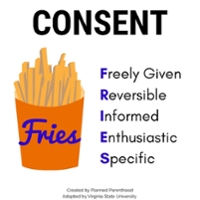
Consent is...
- A mutual agreement, based on a shared desire for specific sexual activities;
- An ongoing verbal interaction, taken one step at a time, to an expressed and honest yes;
- Partners need to openly state their expectations and how far they want to go. Frequently check in with your partner(s) to see if they are comfortable.
- Mutual awareness of possible consequences of activities;
- Each partner remains open to and respects the other partner’s expression of agreement or disagreement to engage in the activity.
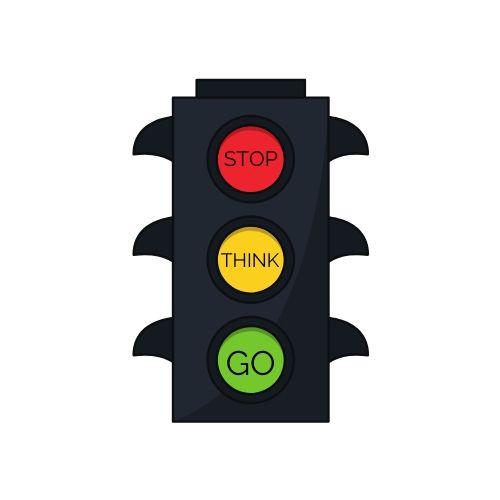
Red-STOP: Signs Consent is NOT given.
Person can barely walk and/or speak coherently Person is asleep or passed out
There is no clear “yes” verbally or non-verbally
Yellow-THINK: Signs When Consent is Unclear.
Person shares that actions did not match words and/or previous actions. No previous discussion about the act before it happens
Person makes assumptions based on previous acts
Person suddenly becomes unresponsive or disengaged/ “out of it”
Green-GO: Keep Communicating
Partners come to a mutual decision about how far to go. Partners clearly express their comfort with the situation. All parties involved express agreement before, during, and after
Consent is Not...
- Power - This occurs when there is an imbalance of status or authority, or physical size and strength, or it can feel impossible to honestly express desires and limits
- Coercion - This occurs when someone gets another person to say “yes” by threatening, forcing, manipulating, intimidating, pressuring, blackmailing, drugging, and getting them drunk
What does seeking and receiving consent mean?
There can be a lot of confusion about the terms “seeking” and “receiving” and “expressed permission.” Seeking and receiving expressed permission to engage in sexual activity is best done when using verbal communication with your partner(s). Non-verbal communication may lead a person to think they have sought or received permission when, in fact, they have not.
Seeking consent means...
- Being clear about your desires and expectations;
- Asking permission to engage in specific, named sexual behavior, whether or not you were the one who initiated sexual contact;
- Asking permission each time you wish to progress to new, different, or more intimate sexual behavior.
Asking for a sexual act does not have to be awkward or unsexy. There are many creative and sexy ways that we can check in with our sexual partners about the sex acts we are wanting to initiate with them.
Receiving consent means...
- Hearing clear agreement /desire to engage in specific, named sexual activity;
- Always asking when you’re not sure what the other person is telling you.
In summary, in order to have consent you must receive an answer from the person you are seeking consent from. Here are some examples of receiving consent:

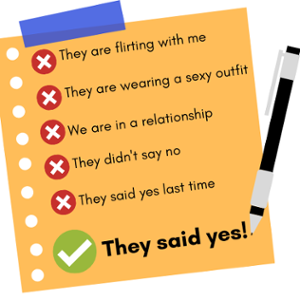
Things to remember when you are looking to receive consent...
A response of I don’t know, I want to but…, I am not sure, I think so, or SILENCE is not consensual answers. They are not clear. A response of NO is clear and obvious that consent is not given. A person giving any of these responses is a person not giving consent.
The responsibility of getting consent is with the person initiating the act. It is not up to the person receiving the act to stop the initiator. It is the responsibility of the initiator to make sure that they get a clear consensual answer.
A complicating factor of seeking and receiving consent is the presence of alcohol and/or drugs. Contrary to popular belief, alcohol does not cause sexual assault. The person committing sexual assault is the cause. However, alcohol is the #1 “date rape drug” and is often used as a tool to commit an assault.
If someone is incapacitated by drugs and or alcohol, they cannot give consent. PERIOD. A person that is passed out or is blackout drunk, legally cannot give consent. Having sex with a person that is passed out or blackout drunk is sexual assault. Having sex with a person that is heavily intoxicated is a violation of the VSU sexual misconduct policy and is illegal under the law of the Commonwealth of Virginia.
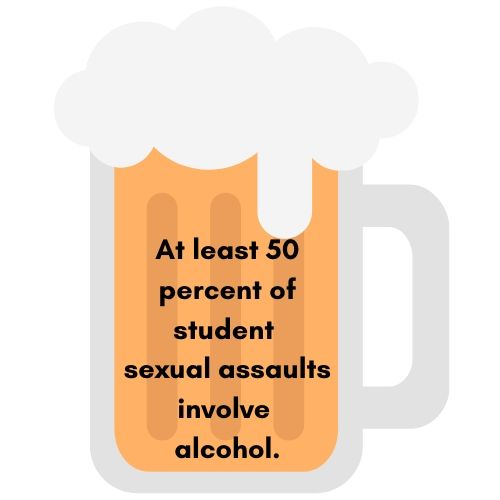
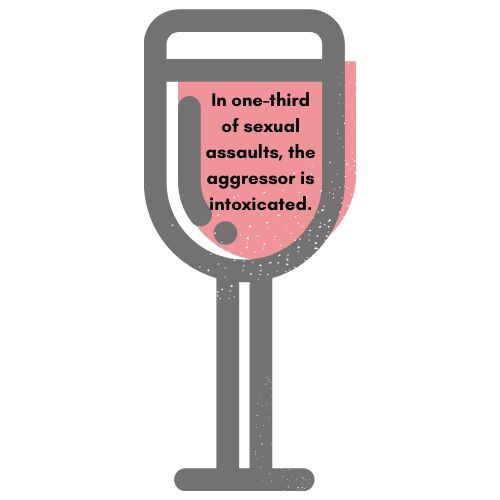
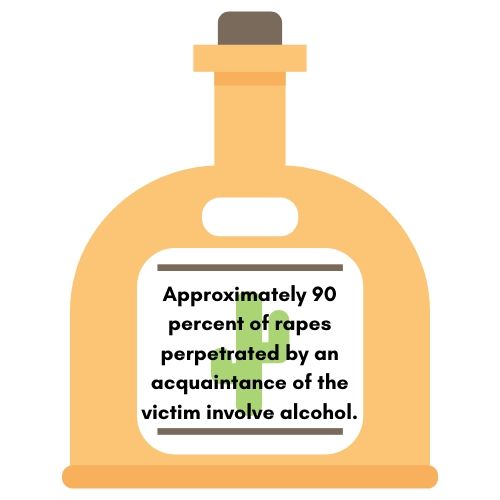
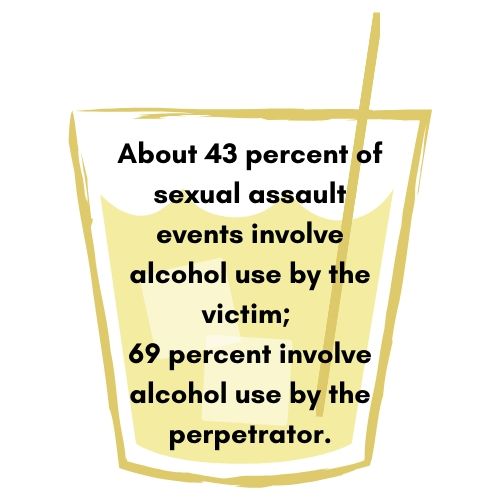
Here are some signs that someone may have had a little too much to drink:
- They weeble. They wobble. They fall down. If a person cannot stand or utilize their own legs because of how much alcohol they drank, then they are too drunk to give consent.
- If a person's speech is so slurred that you can’t understand their words, they make no sense or they are having a hard time communicating, then this person is too drunk to give consent.
- If a person can’t focus their eyes, can't comprehend or is very confused about what is going on around them, then they are too drunk to give consent.
- A person that has urinated or defecated, or vomited on themselves is too drunk to give consent
- A person that is passed out or sleeping is too drunk to give consent.
Remember, if you are asking yourself if someone is sober enough to consent, it is best to pause and walk away from the situation. The person initiating the sexual act is responsible for getting consent. If you are drunk and you perform a sexual act on another drunk person, you are responsible for your behavior.
www.alcohol.org/effects/sexual-assault-college-campus
*Duncan, David, “Prevalence of Sexual Assault Victimization Among Heterosexual and Gay/Lesbian University Students.” Psychological Reports. 66.1 (1990): 65-66. Web.